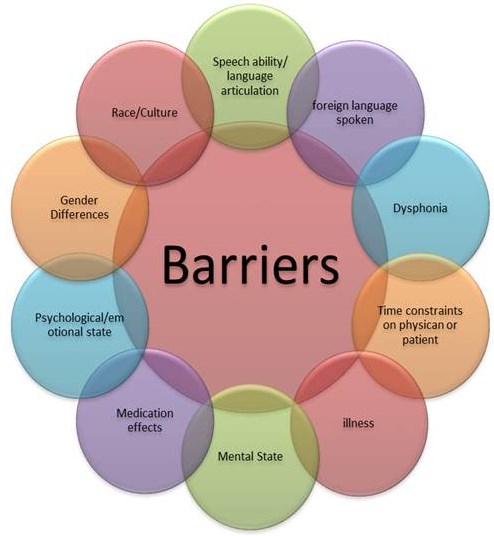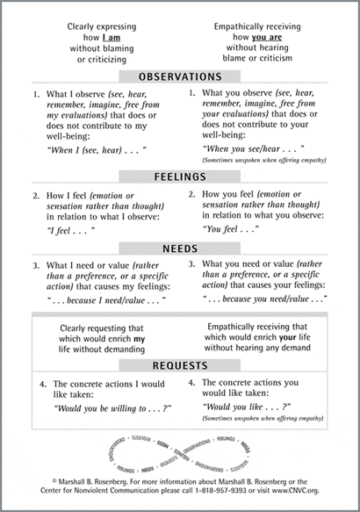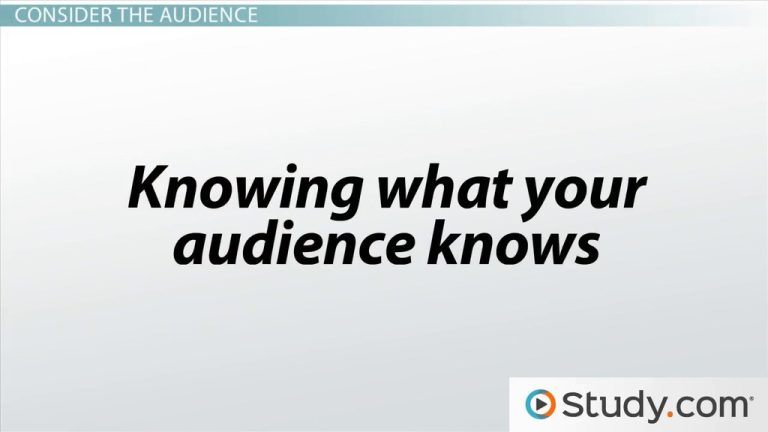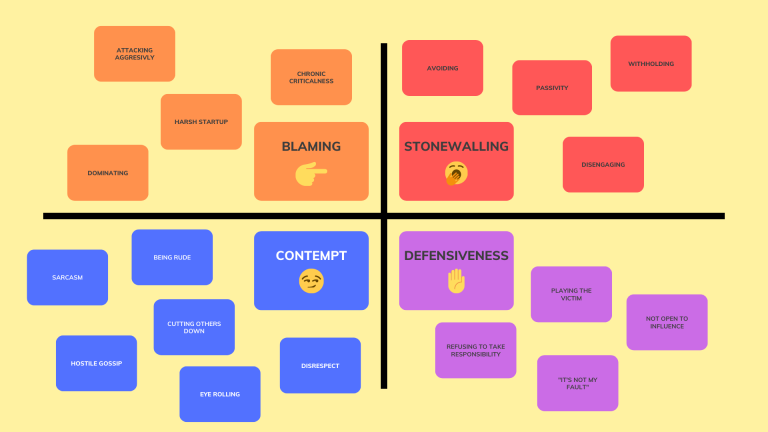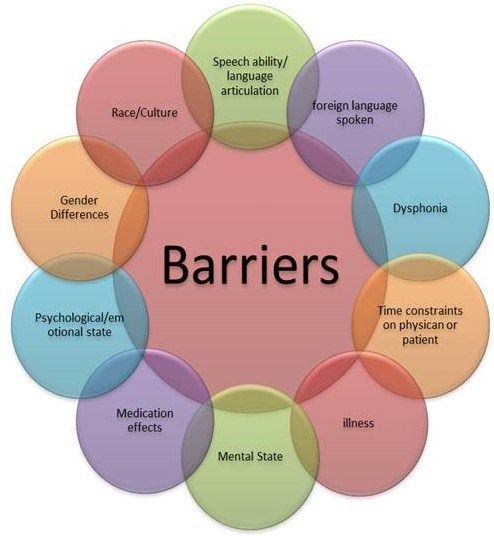How to Use The Contrast Effect in Communication?
To use the contrast effect in communication, strategically present contrasting ideas or options to influence perception and decision-making. This technique involves juxtaposing different elements to emphasize the differences between them, ultimately shaping the audience’s perceptions and preferences.
Using the contrast effect in communication can be a powerful tool for influencing opinions, choices, and behaviors. Whether in marketing, sales presentations, or everyday conversations, leveraging this psychological phenomenon can help guide individuals towards the desired outcome. By understanding and utilizing the contrast effect, communicators can effectively frame their message, sway opinions, and drive positive responses from their audience.
This article delves into the practical applications of the contrast effect in communication, providing insights and examples to help harness its persuasive potential.
Introduction To The Contrast Effect
Welcome to the world of communication where every word matters. One technique that can greatly impact your communication skills is the Contrast Effect. This psychological phenomenon affects the way we perceive information and can be leveraged to enhance the effectiveness of our messages. In this blog post, we will explore the contrast effect, its explanation, and its importance in communication, helping you become a more influential communicator.
Explanation Of The Contrast Effect
The contrast effect is a cognitive bias that occurs when the perception of one thing is influenced by the presence or portrayal of another. This effect stems from our tendency to make judgments based on relative differences rather than absolute values. When two contrasting elements are presented together, the differences between them become more pronounced, shaping our perception.
To simplify, imagine you are standing in front of a white wall. Now, place a small white dot on the wall. You won’t give much attention to the dot because it blends with the surrounding. However, if you place a larger, dark dot right next to the small white dot, it instantly draws your attention due to the contrast in size and color. The same concept applies to communication.
By strategically utilizing the contrast effect, you can emphasize your message and make it more memorable. Whether it’s through the use of visuals, language, or tone, creating contrasting elements can differentiate your communication and increase its impact.
Importance In Communication
The contrast effect holds significant importance in communication for several reasons. It can:
- Grab Attention: In a world flooded with information, capturing attention is crucial. By utilizing the contrast effect, you can make your message stand out and instantly grab your audience’s attention.
- Enhance Comprehension: Contrasting elements help make information more comprehensible. By highlighting differences, you can make concepts easier to grasp and ensure your message is crystal clear.
- Create Impact: The contrast effect adds impact to your communication. By juxtaposing contrasting elements, you can heighten emotions, stimulate curiosity, and evoke powerful reactions from your audience.
- Persuade and Influence: Utilizing the contrast effect strategically can enhance your persuasion skills. By emphasizing the benefits or drawbacks of a particular option, you can influence decision-making and encourage action.
Ultimately, understanding and applying the contrast effect can significantly elevate your communication skills. By harnessing this psychological phenomenon, you can effectively communicate your ideas, attract attention, and leave a lasting impression on your audience.
Understanding The Contrast Effect
When it comes to effective communication, understanding the contrast effect can make a significant difference. This psychological phenomenon plays a crucial role in how people perceive and interpret information. By harnessing the power of the contrast effect, communicators can enhance their ability to influence, persuade, and engage their audience.
Definition Of The Contrast Effect
The contrast effect refers to the psychological tendency for individuals to perceive the differences between two or more stimuli more prominently when presented closely together. In communication, this concept can influence how people perceive information based on its juxtaposition with other pieces of information.
Psychological Basis
The contrast effect is rooted in human psychology, particularly in the way our brains process and interpret information. This phenomenon occurs due to the brain’s natural inclination to compare and contrast incoming stimuli to make sense of the world around us. The contrast effect influences how we perceive the characteristics of something by comparing it to another recent or simultaneous stimuli.
Utilizing The Contrast Effect In Communication
The contrast effect is a powerful psychological phenomenon that can significantly impact communication. When leveraged effectively, the contrast effect can enhance the clarity and memorability of your messages, making them more compelling and persuasive. In this article, we will explore how to use the contrast effect in various forms of communication to create impactful comparisons, deliver engaging presentations, and craft compelling written content.
Creating Impactful Comparisons
When creating comparisons, utilize stark differences to emphasize the contrasting elements. Use bold visuals or direct language to highlight distinctions, making it easier for your audience to grasp the differences. By employing the contrast effect, you can spark interest and facilitate better comprehension of the key points you aim to convey. Convincing your audience through effective comparisons is crucial for engaging communication.
Using Contrast In Presentations
In presentations, employ contrasting elements in your slides or visual aids to capture attention and reinforce key ideas. Incorporate vivid color schemes, varying font sizes, or juxtaposing visuals to underscore differences. This not only makes your presentations visually stimulating but also helps in creating a more memorable impact on the audience, ensuring that your message resonates long after the presentation ends.
Applying Contrast In Written Communication
When crafting written content, leverage contrasting language to highlight differences and create emphasis. Use bold typefaces or italics to draw attention to contrasting concepts or ideas. Additionally, you can utilize rhetorical devices such as antithesis to create a sharp contrast between two opposing ideas, thereby reinforcing the persuasiveness of your writing. The effective use of contrast in written communication can enrich the clarity and persuasiveness of your message, making it more impactful and memorable for your audience.
Common Pitfalls To Avoid
Discover the power of the contrast effect in communication by avoiding common pitfalls. Learn how to craft effective sentences, engage readers, and maintain their interest by using a variety of expressions and avoiding repetitive terms. Follow these guidelines for SEO-friendly, human-like writing that will captivate your audience.
Overuse Of Contrast
One common pitfall to avoid when using the contrast effect in communication is overusing it. While contrast can be a powerful tool to make your message stand out, using it excessively can quickly become overwhelming for your audience. Rather than enhancing the impact of your communication, overuse of contrast can lead to confusion and disengagement.
When employing contrast, it is essential to strike a balance between using it effectively and avoiding its overuse. By maintaining this balance, you ensure that the contrast effect serves its purpose of capturing attention and highlighting key information without overwhelming or distracting your audience.
Balancing The Contrast Effect
In order to effectively use the contrast effect in communication, it is crucial to balance its use. Balancing the contrast effect involves carefully considering the appropriate areas where contrast should be applied and the degree to which it should be utilized.
One effective way to achieve a balanced contrast effect is by strategically selecting contrasting elements in your communication. This could include using contrasting colors, fonts, sizes, or styles to highlight specific information or create visual interest.
However, it is important to remember that less is often more when it comes to contrast. Excessive use of contrasting elements can result in a cluttered and chaotic appearance, diminishing the impact you intend to make. A minimalist approach, focusing on a few well-chosen contrasting elements, can often achieve a more refined and impactful effect.
Additionally, keeping the overall design of your communication cohesive and organized is essential to balance the contrast effect. While contrast can create attention-grabbing focal points, it should always work in harmony with the rest of your communication. Ensuring consistency in your layout, color scheme, and typography will provide a solid foundation for the contrast effect to shine without overpowering the message.
Tips for Balancing Contrast Effect:
|
In conclusion, while the contrast effect can be a powerful tool in communication, it is crucial to be mindful of common pitfalls and maintain a balanced approach. Avoiding the overuse of contrast and strategically balancing its application will allow you to effectively capture attention and deliver your message with impact.
Real-world Examples And Case Studies
The Contrast Effect is a powerful tool that can greatly enhance the effectiveness of your communication. By strategically highlighting differences, you can shape perceptions and influence decisions. Real-world examples and case studies provide valuable insights into how the Contrast Effect can be utilized in different contexts. In this section, we will explore two key areas where the Contrast Effect is highly relevant: marketing and negotiation.
Contrast Effect In Marketing
In the world of marketing, capturing the attention of consumers is vital. The Contrast Effect can be employed to make your products or services stand out from competitors and leave a lasting impression on potential customers.
One compelling example of using the Contrast Effect in marketing is through the creation of product bundles. By offering a combination of items at a discounted price, businesses can leverage the Contrast Effect to make the bundle appear considerably more valuable. This strategic pricing strategy makes the individual items seem more affordable when compared to their original prices, enticing customers to make a purchase.
Another notable marketing application of the Contrast Effect can be seen in effective advertising campaigns. Brands often employ before-and-after scenarios to demonstrate the transformative power of their products or services. By juxtaposing the “before” and “after” images, the Contrast Effect is utilized to highlight the positive change that results from using a particular offering, increasing the perceived value and desirability.
Contrast Effect In Negotiation
The art of negotiation relies heavily on effective communication and persuasion. By understanding and utilizing the Contrast Effect, negotiators can gain an upper hand in achieving favorable outcomes.
One common technique in negotiations is the use of anchoring, where an extreme initial offer is made to create a strong contrast with subsequent offers. For example, in a salary negotiation, a job candidate may propose a higher-than-expected salary, which serves as an anchor point. This initial offer influences the perception of subsequent proposed salaries, making them seem more reasonable in comparison.
Another way the Contrast Effect can be applied in negotiation is through the presentation of multiple options. By strategically offering alternatives with varying benefits and costs, negotiators can influence the perception of value and guide the other party towards choosing the desired option. This technique capitalizes on the Contrast Effect by emphasizing the differences between the options, making the preferred choice more appealing.
These real-world examples and case studies illustrate the power and versatility of the Contrast Effect in various aspects of communication. By harnessing this cognitive bias, marketers can capture the attention of consumers, while negotiators can enhance their persuasiveness. Understanding and utilizing the Contrast Effect can give you a competitive edge in achieving your communication goals.
Frequently Asked Questions For How To Use The Contrast Effect In Communication?
What Is The Contrast Effect In Communication?
The contrast effect in communication is when a person’s perception of one thing is influenced by the presence of something contrasting. It occurs when the contrast between two items exaggerates their differences, making one appear more positive or negative than it actually is.
What Is An Example Of The Contrast Effect?
An example of the contrast effect is when a less expensive product appears even cheaper next to a more expensive one. This creates a contrast in perception and influences the decision-making process.
What Is A Real World Example Of Contrast?
A real world example of contrast is the difference between hot and cold temperatures. It can be seen in the contrast between black and white colors. These examples highlight the distinct variations between two opposing elements in everyday life.
Conclusion
Harnessing the power of the contrast effect can significantly enhance the effectiveness of your communication. By strategically incorporating contrasting elements, you can capture your audience’s attention, make your message more memorable, and even influence their perception and decision-making. So, next time you communicate, whether it’s in writing or speaking, remember to leverage the contrast effect to make a lasting impact.
